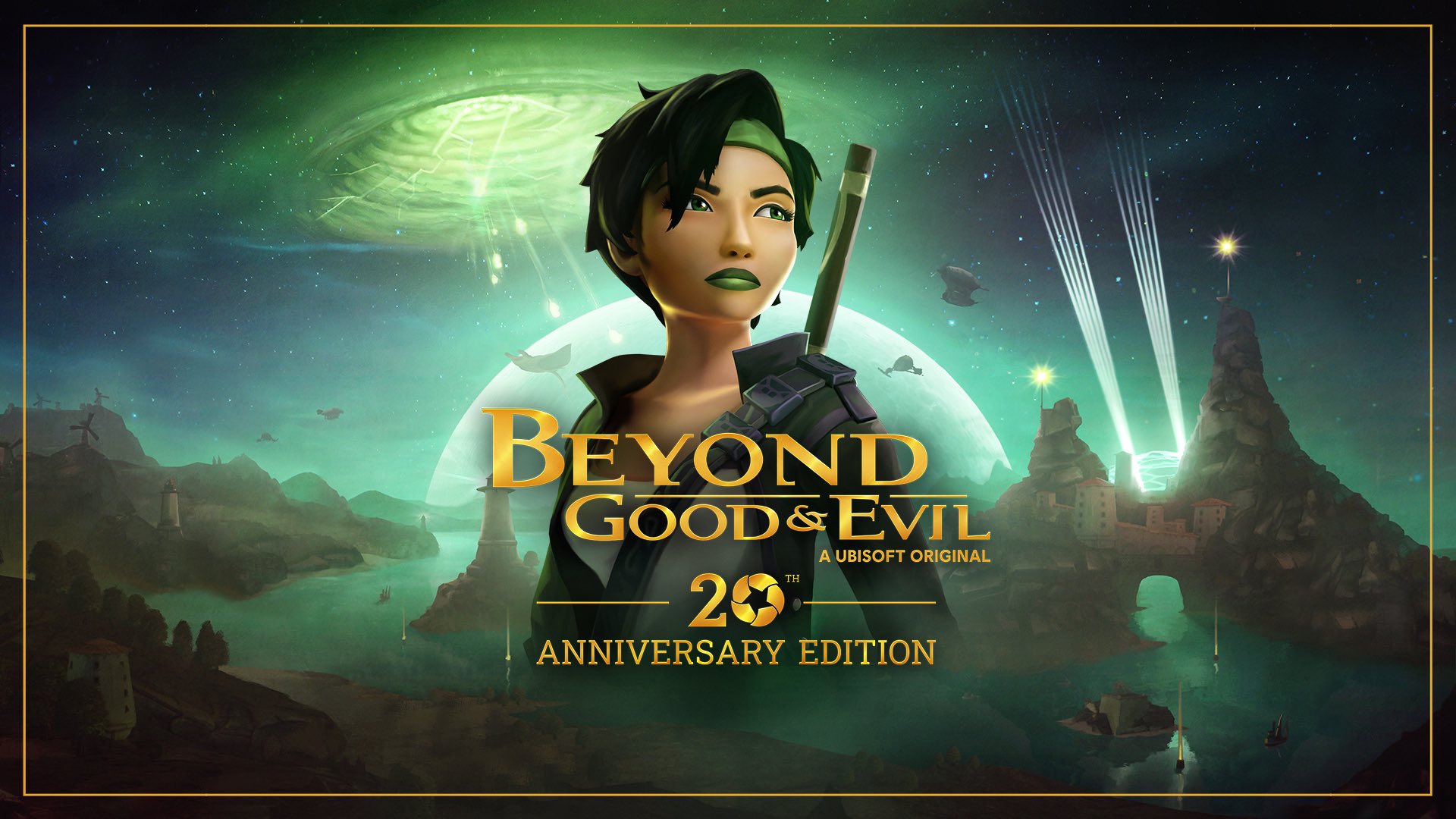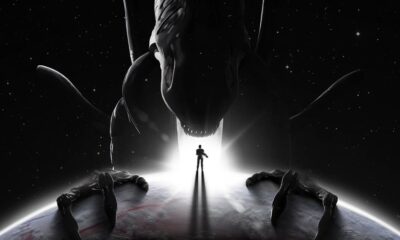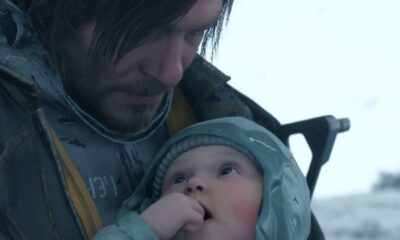Gaming
Beyond Good & Evil 20th Anniversary Edition Review

In the year of our lord 2003, there was a lot of competition for exceptional video game releases and a few of them were from Ubisoft. In two months, the French publisher would release two heavyweight games: Prince of Persia: The Sands of Time and Beyond Good & Evil. Both games were released on Xbox, PlayStation 2, and Gamecube, but only Prince of Persia would find commercial success despite both titles reviewing well.
Most gamers who played Beyond Good & Evil ended up adoring it and then would grow to resent the fact that its sequel would endure the most troubled and lengthy development in history, eclipsing Duke Nukem Forever and Metroid Dread. Whenever or if the sequel ever happens, at least fans can take solace in that their beloved first game would get a dazzling remaster.
There was the questionable Beyond Good and Evil HD on seventh-gen consoles for anyone who couldn’t afford any of the sixth-gen physical copies, but it has since been delisted from digital stores. The 20th-anniversary edition aims to be the definitive way to experience this cult classic; promising new content, extras, and enhanced audio/visuals. Does this game hold up after 20 years? How does it fare on Nintendo Switch? Find out in our Beyond Good and Evil 20th Anniversary Edition review!
Beyond Good & Evil 20th Anniversary Edition
Developer: Virtuous Games, Ubisoft Montpellier, Ubisoft Milan, Ubisoft Pictures
Publisher: Ubisoft
Platforms: Windows PC, PlayStation 2 (as Beyond Good & Evil), PlayStation 3 (as Beyond Good & Evil HD), PlayStation 4, PlayStation 5, Xbox (as Beyond Good & Evil), Xbox 360 (as Beyond Good & Evil HD), Xbox One, Xbox Series X|S, Nintendo GameCube (as Beyond Good & Evil), Nintendo Switch (reviewed)
Release Date: June 25, 2024
Price: $19.99

Nietzsche defied good and evil as being some cosmic binary. He believed that morality was invented by weaklings who can’t handle the truth. According to Nietzsche, it was just a cage built by the herd to corral the strong and the interesting. Nietzsche’s Beyond Good & Evil dares readers to unleash their inner barbarian, embrace their primal desires, and become the “Übermensch”. This Superman, a glorious, powerful being who laughs in the face of morality; the last bastion of a coward.
This is not what Ubisoft’s Beyond Good & Evil is about. Instead of being an introspective dissection of past philosophy, the story is a very straightforward hero’s journey set in a futuristic world populated by animal people. A military dictatorship that clashes with alien forces and at the heart of everything is Jade, a photojournalist who seeks the truth and runs an orphanage.
There is no blurring of morality in this story. The good guys are all plainly good and the bad guys are obviously evil as depicted in their character designs and accompanying background music. Characterization is kept broad and light to appeal to a rousing sense of swashbuckling adventure.

Beyond Good & Evil was pushing the envelope for character writing and animation in the early 2000s. It is most evident in the care put into Jade and her relationship with her pig-man buddy Pey’j. He is the Samwise to her Frodo; one of the many emotional anchors to the story as Jade and company take on jobs to subvert the fascistic Section Alpha.
The first two-thirds of Beyond Good & Evil is fairly open-ended, leaving players unfettered to explore and take on side jobs at their leisure. The structure is not that unlike The Legend of Zelda: The Wind Waker, but on a smaller scale where you won’t find yourself sailing for hours. Jade and the gang will visit settlements, discover islands with a challenge mission within, and even upgrade her hovercraft.

The pacing is punchy. Apart from exploring, Jade will get into fights and battle it out with a staff. The combat is kind of mashy, but it gets the job done as well as most Zelda games. Other activities include photography, stealth sections, hovercraft racing/battles, and plenty of puzzle-solving with the help of a computer-controlled partner; each with their unique gimmicks. Beyond Good & Evil is densely packed with activities and moves along at a brisk pace.
Some of the side activities that involve racing demand almost perfection. A single mistake can lead to getting dusted and losing the entire race. This also applies to the obstacle races in the caves where doors slowly close. Getting slightly snagged means either getting crushed or locked out, which results in a restart.
The cult status of Beyond Good & Evil is justly earned. The game holds up and still feels good to play 20 years later. The atmosphere and art direction also aged well and the cast of characters remains as likable as ever, even if they are on the basic side. Regretfully, the last third of the game does feel rushed and it suffocates the player with moving the plot forward without all the fun shenanigans. This is also when the player gets a spaceship that is hardly used and feels like there was a ton of content axed.

The making of extras seemingly confirms this, as Beyond Good & Evil was intended to be a more epic experience than the game we got. The supplemental material is also impressively all-encompassing, revealing cut content, old designs, and concepts that were not feasible in the sixth-gen; all with informative developer notes. Regretfully, the extras menus are very crash-prone and caused the application to boot me to the home screen multiple times.
An additional scene was added to this new remaster that can be seen toward the end. This epilogue will make fans who have been waiting for the illusive sequel very happy since it sparks new hope that something is coming. It isn’t a dramatic game changer, but it is a hint of where things may be going.

The main attraction of Beyond Good and Evil 20th Anniversary Edition is its enhanced visuals and playability. There is an additional control scheme that has a more logical and comfortable layout than what was originally released, but newcomers won’t care about that. Thankfully, the new graphics are tasteful and mesh well with the art style. If you never played the 2003 version, chances are you won’t know what was changed in the 20th Anniversary Edition.
Obvious enhancements are the lighting effects which nicely ground the characters to the world and add depth to scenes. There are new textures and specular highlights. NPCs have fully modeled hands and there seems to have been an increase in polygons on some characters, making them feel more rounded. The presentation of materials also is richer and more convincing.
When sailing around Hillys, the water has an impressive real-time reflection. However, on Nintendo Switch the effect is low-resolution and will probably render as maximum on other platforms. It is still a beautiful effect considering it wasn’t possible during the sixth generation.


-

 Destination8 months ago
Destination8 months agoSingapore Airlines CEO set to join board of Air India, BA News, BA
-

 Breaking News10 months ago
Breaking News10 months agoCroatia to reintroduce compulsory military draft as regional tensions soar
-

 Tech News12 months ago
Tech News12 months agoBangladeshi police agents accused of selling citizens’ personal information on Telegram
-

 Gadgets3 months ago
Gadgets3 months agoSupernatural Season 16 Revival News, Cast, Plot and Release Date
-

 Productivity11 months ago
Productivity11 months agoHow Your Contact Center Can Become A Customer Engagement Center
-

 Gadgets3 weeks ago
Gadgets3 weeks agoFallout Season 2 Potential Release Date, Cast, Plot and News
-

 Breaking News10 months ago
Breaking News10 months agoBangladesh crisis: Refaat Ahmed sworn in as Bangladesh’s new chief justice
-

 Toys12 months ago
Toys12 months ago15 of the Best Trike & Tricycles Mums Recommend




















